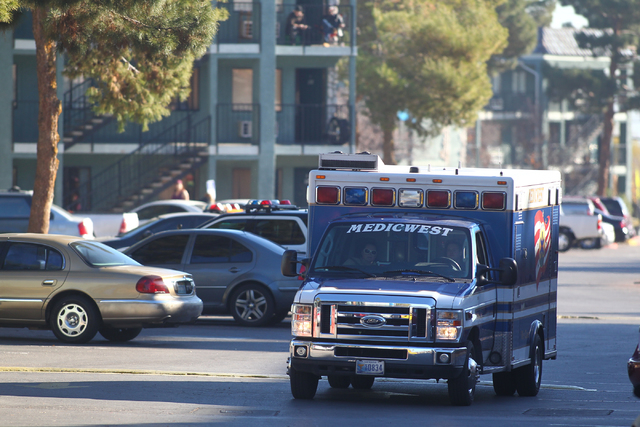Sound of sirens sometimes sparks confusion on roads
When the sirens are screeching and the bright red and white lights are flashing on emergency vehicles, drivers react in different ways. Some panic and slam on their brakes, while others speed up to try to pass the ambulance.
After driving an emergency vehicle for 12 years, Damon Schilling, paramedic and spokesman for American Medical Response and MedicWest, cautions drivers that their actions can have a serious impact on emergency vehicles reaching their destination.
“It’s a situation where every minute counts,” Schilling said. “Take cardiac arrest, for instance. The brain starts to die off in four minutes. After four minutes, patients who are in cardiac arrest and who are not receiving oxygen to the brain can start having irreversible brain damage. So someone who is not paying attention to the road and is in our way can result in a one- or two-minute delay, which can be the difference between life and death or full recovery and paralysis.”
According to the Nevada Department of Motor Vehicles, when an emergency vehicle — an ambulance, firetruck or police car — is approaching and sounding a siren or flashing its lights, drivers must:
— Yield the right-of-way and immediately drive parallel to and as close as possible to the right-hand edge or curb of a highway that is cleared of any intersection.
— Stop until the authorized emergency vehicle has passed, except when otherwise directed by a police officer.
When approaching an authorized emergency vehicle stopped on the road using flashing lights, drivers must:
— Decrease their speed to one that is less than the posted speed limit.
— Proceed with caution.
— Be prepared to stop and if possible, drive in a lane that is not adjacent to the one where the emergency vehicle is stopped.
If drivers fail to obey the rules, they can be fined, but that depends on the jurisdiction, according to Tim Szymanski, Las Vegas Fire & Rescue spokesman.
Failing to do so has also resulted in dire consequences to emergency responders.
“We’ve had people crash in the back of our vehicles, and emergency responders have been critically injured when struck by drivers who fail to abide by the rules,” Szymanski said. “To protect ourselves from people who are not paying attention, we have to block the road and stop traffic.”
In most cases, emergency vehicles will not use their lights or sirens on freeways to continue the flow of traffic.
“People do erratic things on the freeway, like slam on their brakes when they hear the sirens,” Szymanski said. “Once an emergency vehicle stops, drivers shouldn’t try to pass it. There could be a victim lying on the road. There should be one clear lane between the emergency vehicle and lane of traffic.”
Szymanski believes that some drivers do not hear the sirens because modern-day vehicles are more soundproof. He said companies are looking to create a type of Rumbler siren that will have a low frequency and create vibrations to alert drivers that an ambulance is coming.
Other times, drivers follow the proper protocols, but after the emergency vehicle passes, they get immediately behind the vehicle in order to go the same speed, Schilling said. When the emergency driver has to make a sudden stop or turn, accidents are more likely to happen.
“The three biggest tips that I can give to drivers are to always be attentive, do not slam on the brakes right in front of us and just get to the right and stop,” Schilling said. “We deal with different types of emergencies, and every action of a driver can have a serious impact on the situation.”
Contact North View reporter Sandy Lopez at slopez@viewnews.com or 702-383-4686. Find her on Twitter: @JournalismSandy.




























